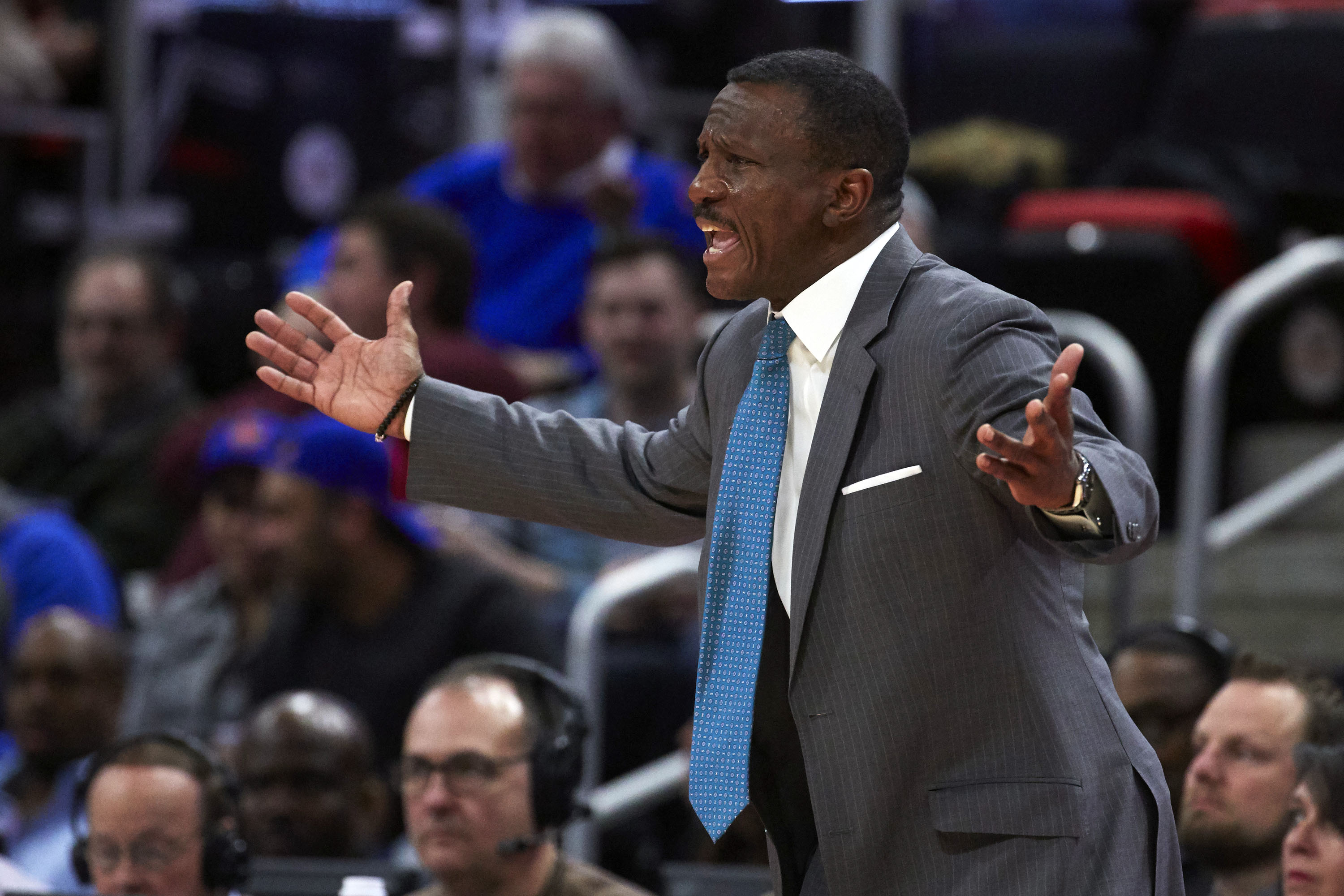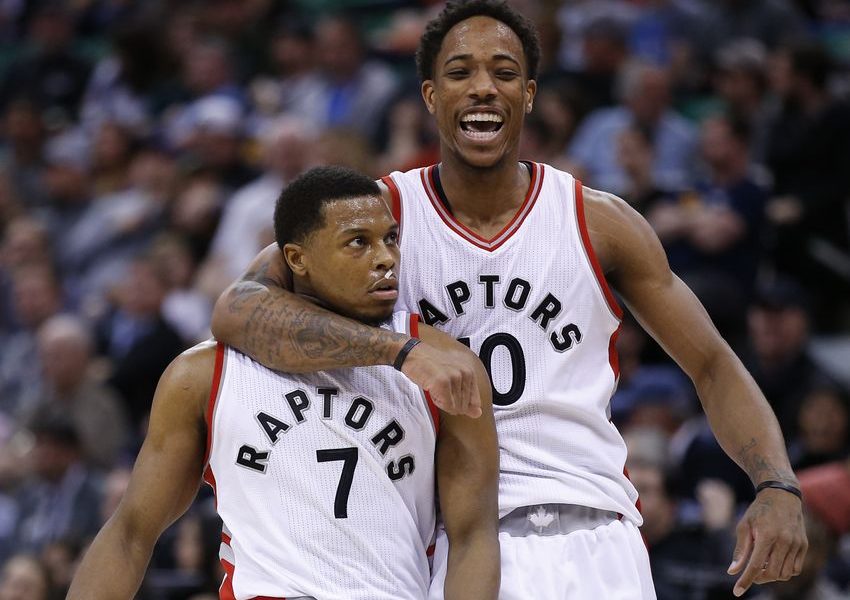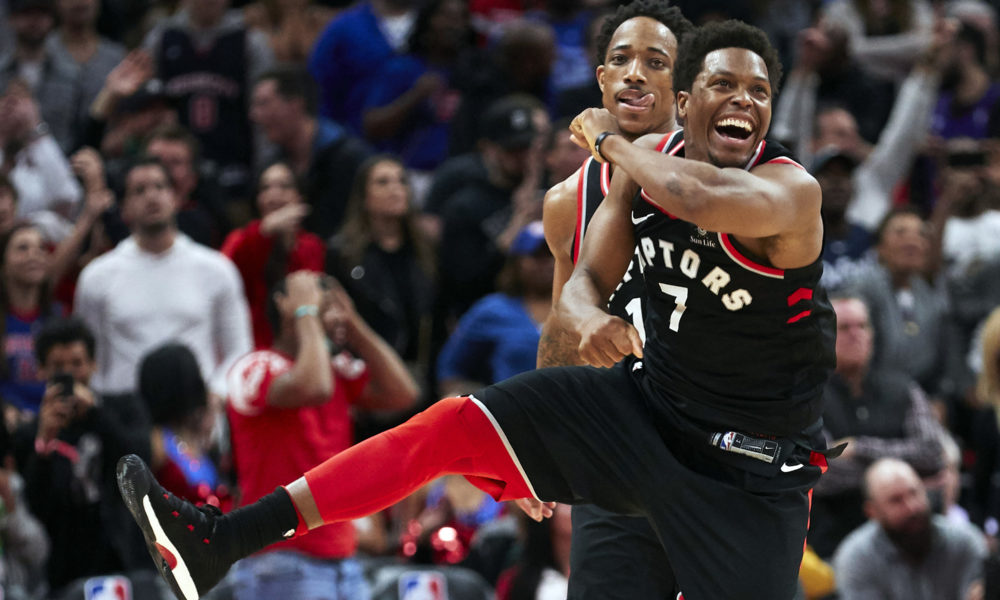All can never be well in Jurassic Park. The Toronto Raptors are the top seed in the Eastern Conference, remain on course for their first-ever 60 win season, and have steadily gained respect across the border. Yet, this has now become the time to pinpoint defensive lapses during a stretch in which they played 13 games in 22 days and worry about the possibility of facing Giannis Antetokounmpo in the first round, Joel Embiid and Ben Simmons in the second round, and the king himself, LeBron James, in the East finals.
This past Monday, NBA.com stats guru John Schuhmann added to the angst, revealing an alarming statistic about Toronto’s defense against the different levels of offense the other 29 teams have achieved this season.
First, a bit of good news. The Raptors are a league-best 33-2 against teams under .500, and that’s reflected in their 98.0 defensive rating against teams ranked 21-30 in offense as well as a 101.3 defensive rating against teams ranked 11th to 20th. The bad news? The numbers suggest they don’t have a clue against the top 10 offenses in the league.
Have noted how Raptors have been best at taking care of business, but after Ls to 2 top-10 offenses (CLE & LAC) last week, here’s something…
Only the Cavs have been worse defensively vs. league’s top-10 offenses. pic.twitter.com/JmoAq3qRZY— John Schuhmann (@johnschuhmann) March 26, 2018
A 115.7 defensive rating — the second-worst mark among the 30 teams — with an 8-10 record is undoubtedly concerning. If Toronto is serious about their championship aspirations — and there’s little to suggest they aren’t — limiting the best offenses in the league will be a must. To fully understand what this all means in the greater context of what to expect from the Raptors in the postseason, I tried to divulge as much context as possible. Firstly, which teams carry the best offenses in the league right now that are causing these concerns?
To gain a better perspective of that, I looked at not only NBA.com, but Cleaning the Glass and Basketball Reference as well. CTG, for those of you unaware, is particularly interesting and arguably the most accurate measure because the site excludes garbage time as well as possessions most likely to result in end of quarter heaves.
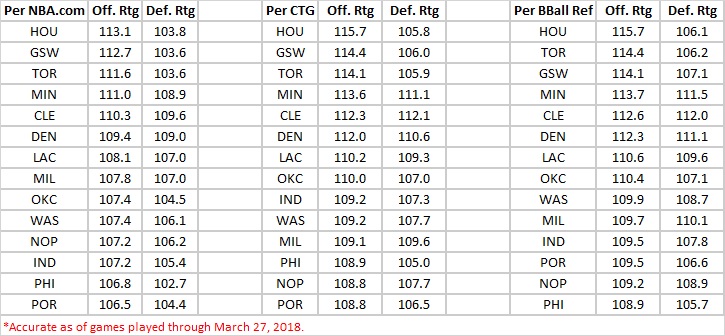
As you’d suspect, Houston is the top team across all three sites, with Golden State and Toronto breathing down their necks. As you move further down the list, though, you’ll notice that there is quite a bit of variability after the top seven teams. For example, the Indiana Pacers rank 12th, 9th and 11th depending on which site you use.
You’ll also notice that the difference between 10th and 14th under the three different measures is less than a point. I know 10 is a nice round number, but the teams just outside it are so close statistically it just seems wrong not to include them. Portland, in fact, has the sixth best offense since the calendar flipped over to 2018, and were clobbered 130-105 on Feb. 2 when the Raptors were on the second night of a back-to-back no less.
It also helps that those teams on the cusp of the top 10 are Milwaukee, Indiana, and Philadelphia, as it’s important to know where they stand for reasons that need not be explained. Following the same line of thinking, I’ve decided to include Boston in the table below (using NBA.com/stats) to see exactly how differently the teams relevant to the Raptors in the playoffs have performed against the 14 best offenses in the league.
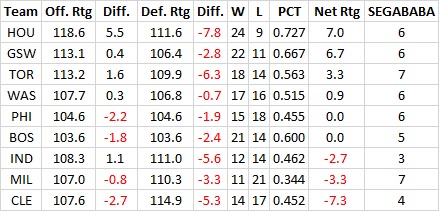
The Raptors and Rockets’ drop off defensively is hard to ignore. In both cases, the eye test suggests they enter shootout mode and try to prove that other offenses can’t sustain themselves for 48 minutes the way they can. It’s absurd that the Rockets up their scoring by 5.5 points per 100 possessions. As we saw earlier, the Raptors play exceedingly well against mediocre teams, so upping their scoring by another 1.6 points is still impressive.
The game in Cleveland was a perfect example of this, and I think it was important for the Raptors to show that even on a night where LeBron James went off for 35 points and 17 assists without a single turnover, on a night where the Cavs shot 62.5 percent from three and 60.3 percent from the field overall, the game still came down to the final shot.
Just as “stopping” King James is now well known to be a fallacy, containing the elite offenses of the league as best you can is all you can really look to do. There is simply too much accurate offensive data available to teams for them to take advantage of, and the lack of defensive metrics on the same level has left teams struggling to keep up on the other end.
In fact, the ability of this team to now engage in these games where teams go shot-for-shot is a huge step forward from last season. The scales have tilted in favor of powerhouse offensive teams, and that was most evident when Toronto was outscored by 102 points from behind the three-point line alone in their four-game series against Cleveland a year ago. The Raptors finished that series with an offensive rating of 100.9 while allowing 118 points per 100 possessions. In this era of basketball, you have to be able to sustain the body blows of the elite teams when they go on their runs, and hit back with runs of your own. This team can now do that.
The offensive changes are almost like a shiny new toy, and the Raptors can’t help but show it off as much as they can. Naturally, the challenge is in carrying over this offense to the postseason while also turning the defense up a notch.
The defense isn’t as bad as the numbers suggest either, I think. Sure, on the surface, a 109.9 defensive rating can ring the alarm bells, but the average scoring rate of these top 14 offenses by NBA.com’s measures is 109 points per 100 possessions. There are also five games that skew their defensive rating by almost three points: The two Warriors games, the two Thunder games, and the one game against the Nuggets on Nov. 1 (boy, that was a long time ago) when they got run out of the building in mile-high Denver and surrendered 129 points. Take those games away where they allowed almost 125 points per 100 possessions and the defensive rating is much more palpable at just a shade behind Washington and Golden State.
The Raptors have allowed 116.1 points per 100 when matched up against the Rockets, Warriors, Cavaliers, Timberwolves, Nuggets, Clippers and Thunder, good for a 5-9 record. Realistically, only one of those teams poses an imminent threat, while if they get to play Houston or Golden State, it’d be hard to imagine too many people complaining. But who am I kidding, this is Raptor land we’re talking about.
Against solely Eastern Conference opponents that are among the better offenses (the East playoff teams not including Boston and Miami), the Raptors have posted a 10-6 record and a 105.9 defensive rating, so it’s not all doom and gloom. They have a defensive rating of 95.3 against Boston and 103.2 against Miami. If you’re looking for even more positivity, there’s this from friend of the pod from theScore, Joe Wolfond:
feel like the raps' defensive falloff in the past 6 games (starting with the thunder loss) is overstated. their defensive shot profile has actually improved in that stretch (fewer 3s, wide-open 3s, free throws, & shots at the rim). their opponents have just shot ridiculously well pic.twitter.com/OEz0XNqKVi
— Joe Wolfond (@joey_doubleyou) March 28, 2018
Other points of interest
No surprise seeing the Wizards have the least drop off against the elite teams since they are notorious for not showing up against the mediocre teams in the league. This is also why their potential to do damage in the playoffs should be respected if John Wall is healthy.
Philadelphia and Boston are clearly incredible defensively, but if you can minimize the turnovers, their ability to execute in the halfcourt will be tested in the playoffs.
I’m not a huge believer in Indiana, and the fact that they’ve played only three of these great offensive teams on the second night of a back-to-back and only 26 games total to this point against those high powered offenses give me even less reason to do so. Another point to note is that they played all four of their games against the Cavs before the trade deadline, winning three out of the four. Their only game against the Warriors thus far came with all of Steph Curry, Klay Thompson, Kevin Durant and Draymond Green absent.
Milwaukee have continued to struggle defensively under Joe Prunty, and their record against good offensive teams is worrying for them, but should give Raptors fans reason to breathe a little easier.
—
As you can hopefully tell by now, there is plenty of context within which these numbers should be considered. How you view the glass is up to you.

